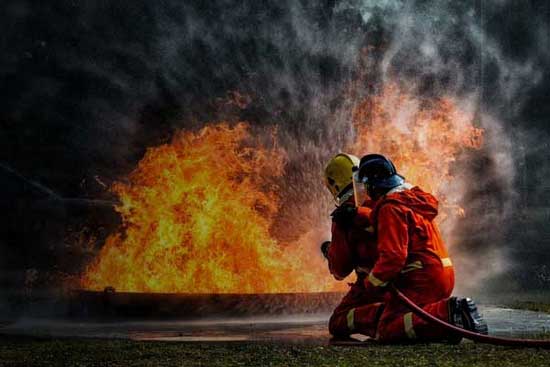Differences between Flash Point and Fire Point
Understanding their safety features is of utmost importance when it comes to handling, storing and using flammable liquids. Among the essential parameters to be taken into account are the flash point and focal point of a substance. Although these terms are often used interchangeably, they represent different critical concepts in different industries, including petrochemicals, transportation, and safety regulation.
Flash point and fire point define different stages of a substance's ability to ignite and sustain combustion, and each has unique implications for safety, handling and regulatory compliance.
What is flash point?
The flash point of a volatile material is the lowest temperature at which it can vaporize and form a flammable mixture in air. In other words, it is the temperature at which the vapors of a liquid can "flash" or ignite momentarily when an ignition source such as a flame or spark is introduced.
It is critical to note that the flash point is not the temperature at which the liquid itself ignites, but only the temperature at which the vapors it produces can ignite. The vapors cease to burn as soon as the source of ignition is removed unless the temperature has reached the flash point; at this point the vapor may continue to burn even after the ignition source has been removed.
The flash point is an important property for safety considerations because it indicates the risk of a liquid causing a fire or explosion. Materials with lower flash points pose a higher fire risk and require greater care in handling and storage.
There are two primary methods to test the flash point of a substance..
- Open Cup Method: In this method, the sample is heated in an open cup and an ignition source is passed over it at regular intervals until the vapor ignites.
- Closed Cup Method: The sample is heated in a closed cup and the ignition source is introduced into the vessel. The closed cup method generally produces a lower flash point and is more widely accepted because it more closely mimics real-world conditions.

What is fire point?
The fire point is the temperature at which the vapors of a liquid continue to burn for at least five seconds after ignition by an open flame or other ignition source. It is closely related to the flash point, but is a higher temperature.
Although flash point is the lowest temperature at which vapors of a liquid can ignite, fire point refers to the ability of those vapors to burn continuously. At the focal point, the vapor/air mixture is rich enough and conditions are such that combustion continues even after the ignition source has been removed.
The fire point is especially relevant when assessing the fire risk of oils and other flammable liquids. It provides information about how a fire may behave once it has ignited and helps determine safety measures for handling and storing the material.
Typically, the focal point is measured using an open cup device, which is also used to determine the flash point. The liquid to be tested is heated and a small flame is passed over the surface. The temperature at which the burning becomes continuous, instead of just flickering and going out, is recorded as the burning point. In general, the focal point of a substance is about 10°C higher than its flash point, although this can vary depending on the specific material and conditions.
Understanding the fire point of a substance is important in various industrial applications, including the selection and design of equipment, as well as the implementation of safety protocols for handling, transporting and storing flammable or combustible liquids.
Key differences between flash point and fire point
The flash point and fire point are two important characteristics associated with flammable liquids and are used to determine the fire risk of a particular material. Here are the key differences between flash point and fire point..
| Aspect | Flash Point | Fire Point |
| Definition | Lowest temperature where vapors can ignite but not sustain burning. | Lowest temperature where vapors ignite and continue to burn for at least five seconds. |
| Temperature | Generally lower | Usually higher, often about 10°C above the flash point |
| Burning Continuity | Vapors ignite but do not continue to burn | Vapors continue to burn even after ignition source is removed |
| Testing Method | Can be determined using open or closed cup methods; observes momentary ignition | Can be determined using open or closed cup methods; observes continuous burning |
| Significance | Used for classifying materials, handling, storage, transportation | Relevant for understanding fire behavior, fire-fighting strategies |
| Regulatory and Safety Considerations | Commonly used in regulations for safety protocols | Less commonly used in regulations but informs safety measures in specific settings |
Conclusion
Understanding the key differences between Flash Point and Fire Point is vital for anyone dealing with flammable materials as it informs safe handling, storage and use practices. While the flash point represents the lowest temperature at which the vapors of a liquid can ignite but not sustain combustion, the flash point is the point at which the vapors continue to burn even after the source of ignition has been removed. These differences have profound implications for different industries and safety regulations, and guide the classification of materials and the establishment of safety protocols.
By appreciating the unique features of Flash Point and Fire Point, professionals and enthusiasts alike can create a safer environment, optimize performance in industrial applications and contribute to the responsible management of potentially hazardous substances.
Related Post(s)

Active fire protection systems such as water sprinklers and spray systems are widely used in the process industry to protect storage vessels, process plants...